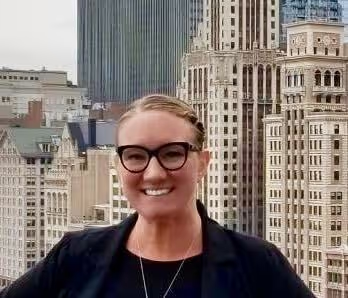Ready to create more pipeline?
Get a demo and discover why thousands of SDR and Sales teams trust LeadIQ to help them build pipeline confidently.
It's never been more challenging for SDRs to build pipeline. Old prospecting habits need to be reinvented to stay in the game. We've invited SDR managers and leaders to share their workflow strategies, best practices, and tips that have helped their sales teams stay productive and hit quota. You don't want to miss out on their expertise! This webinar is for you if:

Joey Williams
Director, Sales Development, Chili Piper

Jessica Nelson
Sr. Director of Sales Development, Stream

Tony de Leon
Director of SDR, Evisort

Alex Carlson
SDR Manager, LeadIQ

Millie Brooks
Director of Digital Marketing & Demand Gen at LeadIQ

Your SDR team spends more time on admin activities and tool hopping than prospecting.

You're looking to streamline and standardize your prospecting process.

You need a better outbound process to generate pipeline and keep crucial data in-sync across your sales tech stack in today's challenging market
Get a demo and discover why thousands of SDR and Sales teams trust LeadIQ to help them build pipeline confidently.
At LeadIQ, we’re on a mission to help B2B sales teams get better and better results with outbound efforts.
When we opened up shop in 2015, we were committed to helping professionals find B2B contact data. But we quickly realized that accurate data is not a panacea for SaaS sales teams.
While accurate data definitely plays a huge role in outbound success, many SDR teams spend way too much time jumping between tools and handling administrative tasks, slowing down their efforts considerably. It’s a major pain point.
This makes it much harder to create sales processes that ensure sales development reps are reaching the right people with the right message at the right time.
To help sales teams figure out how to bake more efficiency into their outbound prospecting workflows and consistently deliver pipeline, Mille Brooks, former director of digital marketing and demand generation at LeadIQ who’s now director of marketing at ASAPP, recently hosted a webinar featuring:
In this post, we examine some key takeaways from our panel of experts that can help your team cover more ground in less time.
What can your SaaS SDR team do to deliver pipeline? Let’s take a look.
Delivering pipeline is easier when you don’t have to find the needle in the proverbial haystack. According to Tony, it’s not uncommon for reps to have 150,000 prospects inside Salesforce. For this reason, figuring out where to direct your efforts more efficiently is critical.
When you have a talented ops team in place, they can help you find prospects that fit your ICP within the data you have. Once that happens, you need to prioritize the accounts you’ll target.
“The first thing to do is just understand what the low-hanging fruit are,” Tony says, adding that looking at closed-lost reports that an AE has that you haven’t looked at in a while can be helpful here.
To increase the likelihood of success, target multiple prospects at each account.
“Make sure that you’re not only looking for decision makers because that might actually limit how far and how wide you can go in an account,” he says.
While outbound efforts are easier with good data, sales managers need to make sure the processes they have in place are as streamlined as possible.
“The number one thing is if you’re running a team of reps and you want them to be reaching out to the right account, you yourself need to know who those best accounts are,” Joey says. “It definitely starts with what data you have in your CRM but also very quickly moves into what the daily process is for your reps.”
For the best results, managers should try to replicate what their reps are doing to understand their workflows and smooth any hiccups out. As an example, the Chili Piper team has invested a lot of energy in producing effective outbound sequences that the team can quickly personalize, which saves a considerable amount of time.
“The biggest thing for us is making sure that our processes with our cadences are extremely repeatable to be personalized,” Joey explains. “We’ve put a lot of work into turning our cadences into almost like Mad Libs of personalization.”
Rather than focusing on thousands of accounts at once, SDR reps should figure out how many accounts they’re hoping to get by the end of the year and work backward from there.
“I would think realistically an SDR could work maybe 200 accounts at any given time; more than that, and things are going to get lost in the shuffle,” Jessica explains.
Once they’ve narrowed their focus, SDR reps should tier the accounts and ensure that they are put into cadences targeted for their vertical or persona.
“We tier [our accounts] and say, these are the right accounts that are really the perfect ones that you should be targeting, and these are the right types of messages that we’ve built out for them,” she continues.
By doing so, reps don’t have to think about where they should spend their time, and they don’t need to figure out which accounts have the highest conversion rates versus which might not be the right fit.
After accounts are tiered, reps should prioritize 10 or 20 accounts from the highest tier and ensure outreach is thoroughly personalized.
“I’m going to know everything about their business versus the maybe 75 to 100 where I know they’re good fits but they’re a little less of my energy,” she continues.
When reps are given too many accounts to focus on at once, their job becomes that much harder.
“It’s your job to make sure that you’re not giving your BDR 150,000 accounts to look at at any point in time,” Tony says. “That’s an automatic fail.”
Many outbound sequences start off with some variation Hey, I see you’re the CEO or Hey, I see that you’re hiring. So what?
“It’s really important to not frame [your sequences] in a way that makes it seem like you’re asking for praise for having noticed something,” Joey says. “‘Hey, I see that you’re the CEO.’ Great. What does that mean? Why should I keep reading this email?”
Instead, Joey suggests using a different framing for personalized outreach: Hey, as the CEO, you are doing [this], and I wanted to reach out because of x.
Additionally, Joey recommends reaching out to prospects for the right reasons.
“If the reason you’re reaching out to someone is because your manager gave you the account and you’re trying to hit your quota, if that’s genuinely your reason, it’s not really going to turn into anything,” Joey says. “If you’re reaching out based on research you did and you actually think you can help for [a specific] reason,” your sequences will be better received.
There are only so many hours in a day. Since writing emails can take a lot of time — and even longer when you need to personalize them — SDRs need to be early adopters of modern tools, like generative AI.
“We’re lucky enough to have a generative email AI writing tool which definitely helps speed up the process,” Alex says.
In addition to using new tools, it’s also important for teams to meet regularly to discuss what’s working and what isn’t.
“That’s something that I’m forcing my team to do on a weekly basis — not only share best practices but try new things — whether it’s telling a story or dropping a funny meme into a cold email or just saying anything to get the prospect’s attention,” Alex explains.
While some reps rely heavily on email, others prefer cold calling. Using AI tools, reps with this sort of skill set can send out a bunch of emails without sacrificing the time they’d spend doing what they do best: booking meetings via phone calls.
“If I’m forcing [a rep] to draft all these emails just because a process is a process, I lose out on maybe 50% of all the meetings that he’s booking just because I want him to send emails,” Tony continues. “Now, he doesn’t have to sacrifice that because there’s a little bit of middle ground. Maybe there’s like 10% of accounts that [the rep] really wants to send good emails for but doesn’t want to sacrifice 90% of his time writing them.”
And despite what you might think, the emails you send out don’t need to be flawless. When your messages hit a prospect’s inbox, your name becomes more familiar, which can help you achieve more success with cold calling.
“Sending out an email prior to that phone call turns that cold outreach into warm outreach,” Alex explains.
No matter how effective your SDR team is, they can always improve.
When you’re ready to learn more tips and tricks about how SDRs can hit quota and improve business outcomes, watch the full webinar above and find out about:
Here’s to building better SDR workflows!